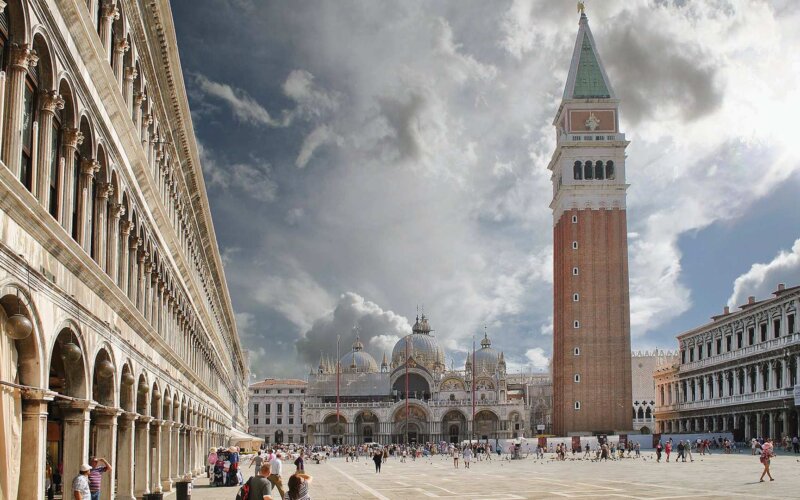Greek architecture has played a significant role throughout the history of Western architecture. The codification of the three architectural orders Doric, Ionic, and Corinthian have represented throughout the Mediterranean an expressive code that has become universal.
In the following centuries, these styles will be taken up again, in its fundamental traits, from Roman architecture. Then passing through the Renaissance and up to the post-modern expressions of the 20th century, it will be possible to distinguish the traces of Greek architecture.
In Hellenistic culture, architecture played an important social role, since it hosted in its spaces all those social activities in which the majority of citizens participated.
The most important public buildings were certainly the places of worship and in particular the temples. However, the other buildings where the community gathered weren’t less important.
Squares, streets, theatres, arcades, gyms, all had impressive dimensions, suitable for the high participation of citizens.
Fond of Italian Architecture?
Book a Tour Now!
Immerse yourself in the most significant places in our history.
CHOOSE NOW YOUR FIRST ITALIAN ARCHITECTURE TOUR
ROME - The Colosseum, Beasts & Gladiatorial GamesROME - Imperial Forum Full Immersion
ROME - Rise and Fall
VENICE - Journey into St. Mark’s Basilica, the Venetian Gem
VENICE - Once-in-a-lifetime Tour
MILAN - Duomo Cathedral and City Center Tour
FLORENCE - The Heart of Renaissance Florence: Duomo and Baptistery
FLORENCE - Highlights of the Uffizi Gallery
POMPEII - The City Frozen in Time
POMPEII - Discover Pompeii Hidden History with a Local
HERCULANEUM - Ancient Rome
SICILY - The Heart of Palermo
SICILY - Syracuse Tour
In different areas of the Mediterranean, there are many examples of Greek architecture. In particular, in Italy, we boast some sites of extraordinary beauty.
These sites are mainly located in the territory of southern Italy. Two of them represent one of the most suggestive attractions, from the archaeological point of view, that the world envies us: the Valley of the Temples in Agrigento and the ancient city of Paestum.
The valley of the temples of Agrigento has been a world heritage site since 1997. A unique, enchanting place, spread over an area of about 1300 hectares and survived to these days in excellent conditions.
The ancient city of Akragas, (Agrigento) was founded in 581 BC and became one of the most important Greek colonies in Sicily.
Crossing this place, full of suggestions and immersed in a spiritual quiet, you can fully appreciate the greatness of the ancient Greek civilization, especially at sunset, when a golden light enhances the splendour of the beautiful architecture.
We mention below some of the wonderful temples that can be admired in this archaeological site. The Temple of Concordia, the best preserved. The Temple of Juno, the Temple of Hercules, the Temple of Zeus Olympius, the Temple of Castor and Pollux, the Temple of Hephaestus, the Temple of Athena, the Temple of Asclepius, the Temple of Demeter and the Temple of Isis.
The ancient city of Paestum
Almost 5 kilometres of walls surround the ancient city of Paestum, today a UNESCO World Heritage Site. Crossing the city on foot, three thousand years of history flow before our eyes. Undoubtedly, among the wonders that you can find along the way, the Greek temples are some of the most prestigious. The three most important buildings are the Temple of Hera, which is the oldest (560 BC), the Temple of Athena at the highest point of the city (500 BC) and the Temple of Neptune, the most imposing.
The Greek temple
The Greek Temple follows a precise architectural scheme. First of all, it rests on a rectangular stone basement, arranged on three levels, to form three steps, while the entrance is located on one of the smaller sides of the building.
Entering the building, past the first columns, you find yourself in a large atrium, from which you access the temple cell, where there is the divinity, generally made of a stone statue. The temple is surrounded throughout its perimeter by a colonnade that detaches from the central cell. All around there is space for a wide corridor. The columns of the temple are massive and surmounted by a capital that, according to its craftsmanship, takes a different name: Doric, Ionic, Corinthian.
On the front, a framed and decorated pediment surmounted the temple.
Read more on Italian Architecture.
Page Under Revision
This page is under review and updating. Sorry for the inconvenience.
If you don't find the information you were looking for, do not hesitate to contact us. We are more than happy to assist you.



